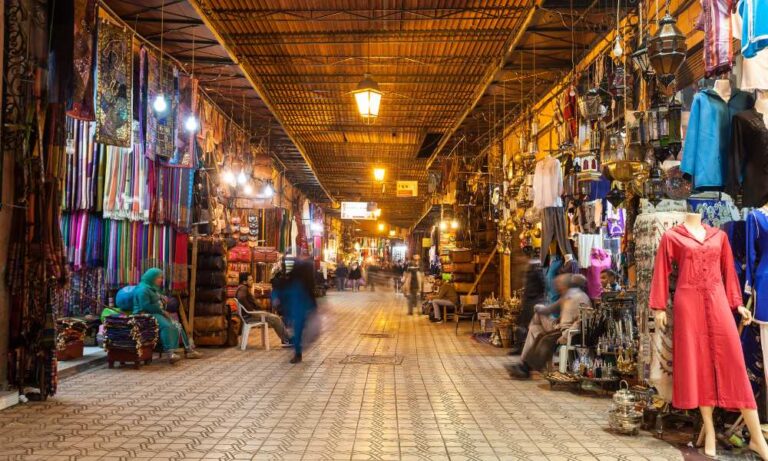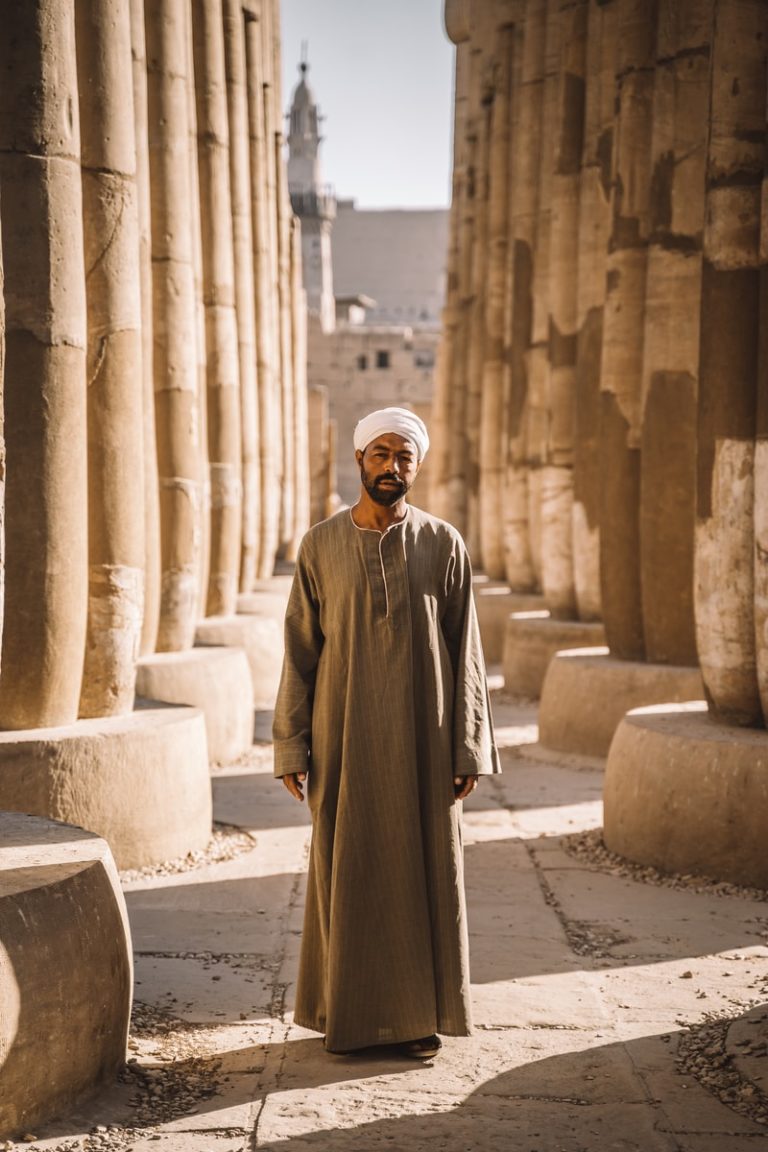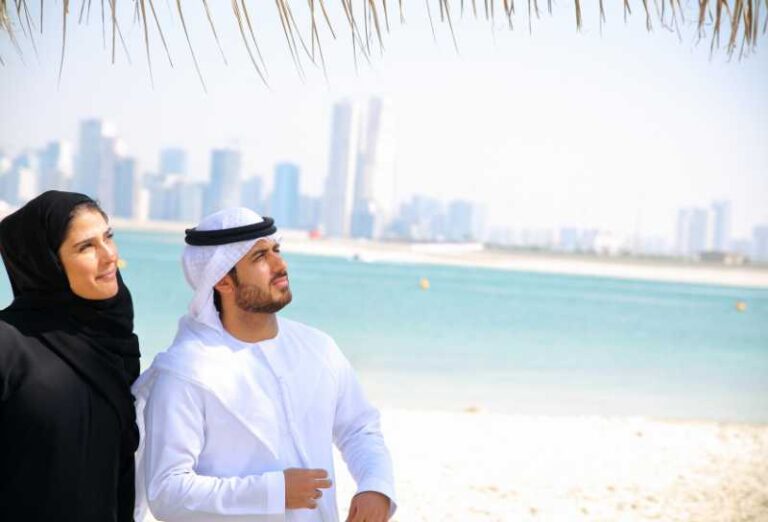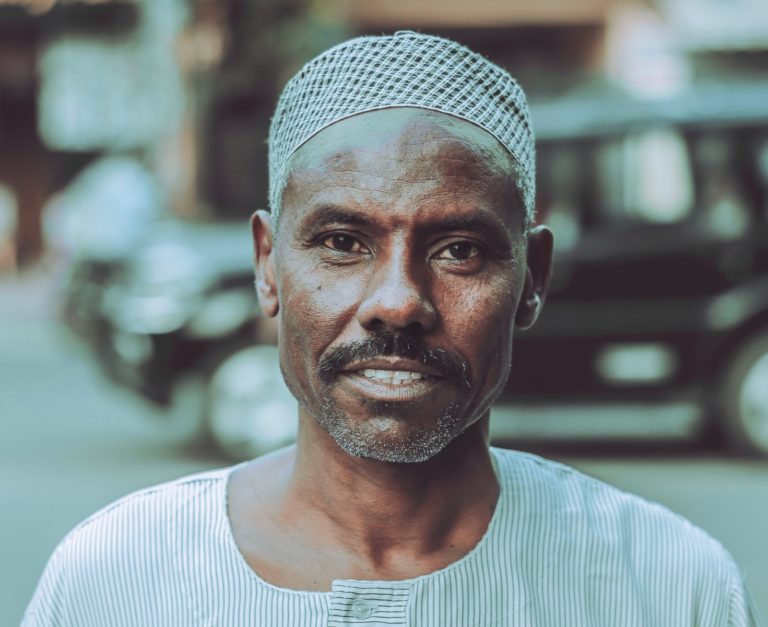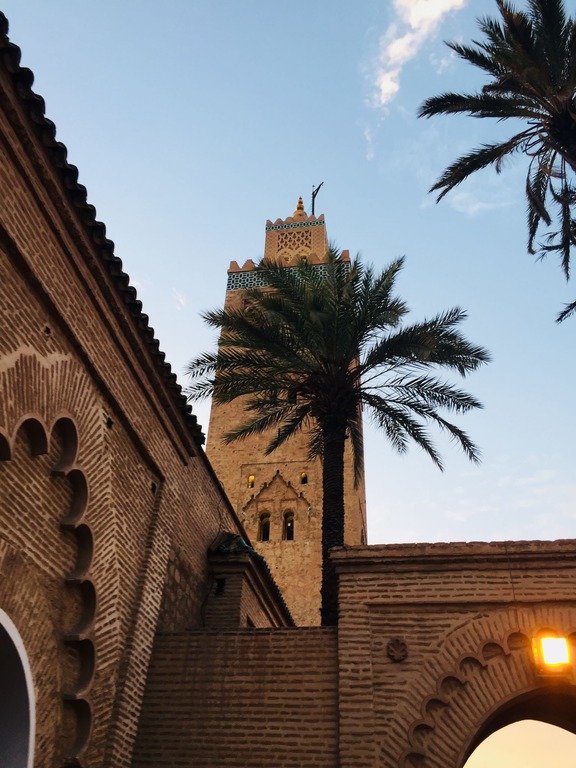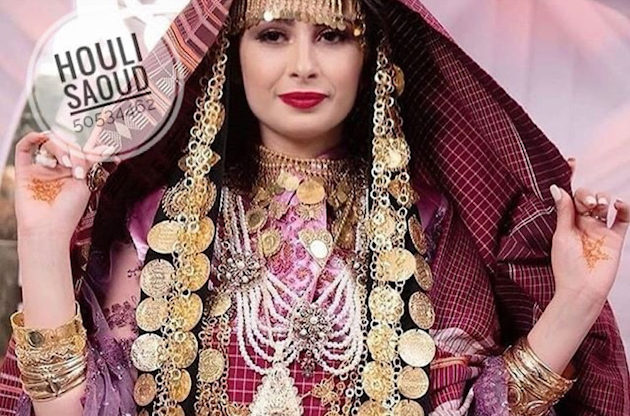The Moroccan Djellaba
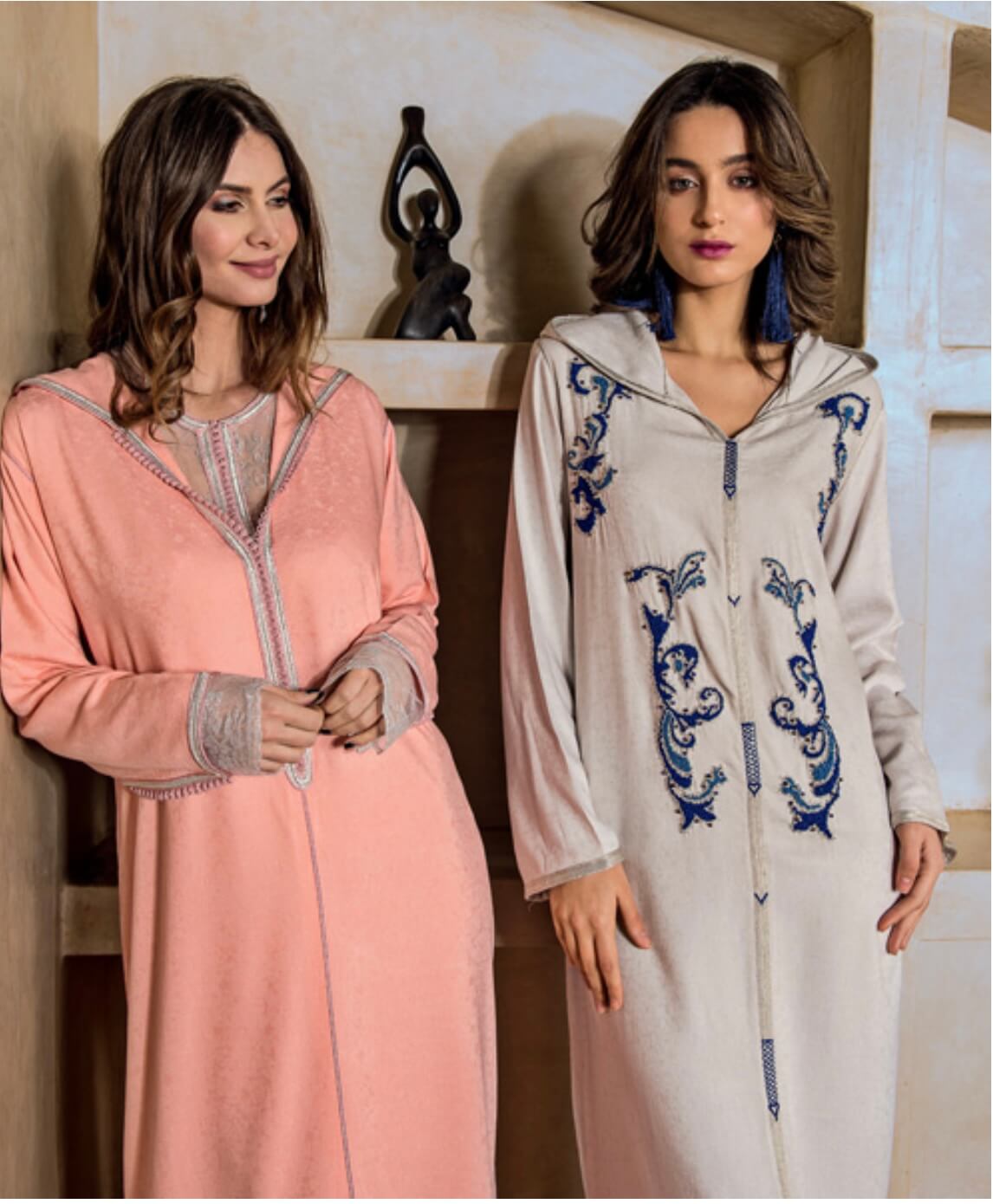
The Moroccan Djellaba is the go-to outfit for many Moroccans, regardless of their age or the weather.
It’s a unique and memorable piece of clothing that has transcended time and remains one of the most popular traditional attires for Moroccans.
This Moroccan traditional clothing, worn by many Moroccans, has gained considerable attention from the global fashion community.
Some links below may be be affiliate links. As an Amazon Associate I earn from qualifying purchases.
Table of Contents
What is Moroccan Djellaba?
The Moroccan Djellaba is a long gown dress that covers the person from head to feet.
The overall size of the djellaba is more airy compared to other dresses. The sleeves are slightly looser at the cuff than at the shoulder
The same goes for the overall width of the djellaba with having the top more fitting than the loose bottom.
The typical djellaba also has a hood also known as the qobb that connects from the shoulder seams or the neck.
The hood used to have real practicality when it comes to protecting against the sun or the strong wind when the djellaba was more popular, but it is now used as a decorative piece rather than a practical element.
Moreover, the djellaba has an opening around the chest level that is usually adorned with embroidery and features adjustable traditional buttons, such as shank, toggles, cloth, or pearl buttons.
When it comes to the textiles or styles that are used in the djellaba, the sky is the limit.
Although the traditional djellaba used more traditional fabrics such as wool or silk, most djellaba pieces today are made out of synthetic materials.
Some of the djellabas are adorned in beads, tassels, embroidery as well as lacing.
The Distinctive Features of the Djellaba
The Djellaba is usually thick in material. In addition to that, it’s also made to be resistant to heat and the cold.
Most djellabas have neutral colors that could signify their use. For instance, a white djellaba is typically used for special occasions such as weddings.
A brown or gray djellaba can be used for just about anything such as running errands, going to the mosque, visiting family members, or buying groceries
The qobb is a very important piece for the djellaba. It ought to be big and spacious to cover the head on sunny or rainy days.
It would also be used as a pouch in some instances. The person who wears the djellaba would put their keys, money, or any belongings they had in the qobb and turn it over their front.
Nowadays, most djellabas come with pockets and the qobb has lost its practicality. Though it’s still important in the making of the djellaba, it’s seen as a decorative piece that often has a tassel at the tip.
In most cases, djellaba has embroidery and artwork done. The style, as well as the look of the djellaba, depends on the region or the tailor “lkhyat”.
The embroidery or lacing would be done at the hem or the bottom as well as the cuffs. Sometimes the colors and fabrics used for embroidery would be contrasting the color of the djellaba.
The colors can be vibrant or dimmed depending on the mood or occasion. The fabrics used today are often synthetic and not as durable as the heavy and thick wool djellaba that was used before.
Moroccan Djellaba for Women
Women use the djellaba a lot more frequently than men do. Starting in the 1940s, the djellaba has become a staple fashion item for many Moroccan women.
It showed elegance, beauty, taste, but also had some decency.
The main difference between the ways women use the djellaba is that women use it as a fashion item.
Most women have many djellabas that are used for shopping, going out, running errands, one for just being at home, and some djellabas that are reserved for special occasions.
The colors and designs differ a lot. You can see some reds, blues, light colors, as well as vibrant greens.
The styling is also different as younger women opt for djellabas that fit better around the waist and shoulders giving a better silhouette that is more appealing.
Find Your Perfect Moroccan Djellaba for Women Online
Moroccan Djellaba for Men
Men do not use the djellaba today as much as women do. The style of the djellaba has remained original in its form for men.
Most men today use the djellaba for special occasions such as the prayer or eid, weddings, funerals, Ramadan, or baby showers.
Most men also have toned-down djellabas that are usually black, white, brown, gray, or deep pale green.
Find Your Perfect Moroccan Djellaba for Men Online
Where Can I buy Moroccan Djellaba?
Moroccans have an abundance of tailors known as lkhyat all around the city.
The traditional way of making the djellaba is to find lkhyat, find your favorite fabric, color, and style, then have some measurements taken.
You can either bring your own fabric or have the tailor outsource good fabrics.
After lkhyat takes measurements, then start making the djellaba with every feature the client desires. It might take a few adjustments to make it perfect.
Most people work with their own tailor so lkhyat already knows the measurements and what the client prefers.
If you’re in Morocco, all you have to do is head to the medina which is a traditional marketplace for all things traditional.
You can find lkhyat and then discuss your requirements. However, you can also find some pre-made djellabas that lkhyat makes for the average man or woman.
Luckily, you can do the exact same thing online. There are a few stores that will have you choose your preferred fabric, style, and make your own measurements.
The tailor would then make your djellaba and ship it to your address when it’s finalized.
While the process is not as personable as being with your khyat to make your djellaba, it closes bridges and makes it a lot easier to have access to a custom-made djellaba.
How Much does a Djellaba Cost?
The price of a djellaba can range from 400 dirhams ($40 USD) to 2000 dirhams ($200 USD).
Custom-made djellabas by a well-known designer, known as an lkhyat, can cost around $150 USD.
The cost of the djellaba can also be influenced by the type of fabric used, with silk being more expensive than wool or other fabrics.
Additionally, any embroidery, lacing, styling, or other aesthetic enhancements can increase the price of the djellaba.
